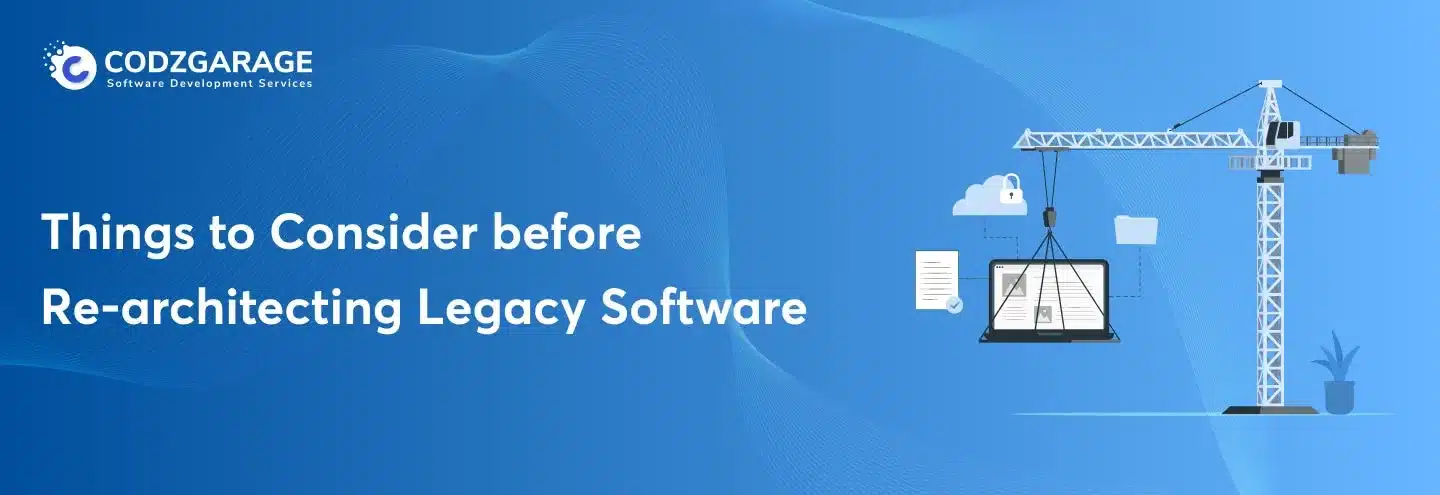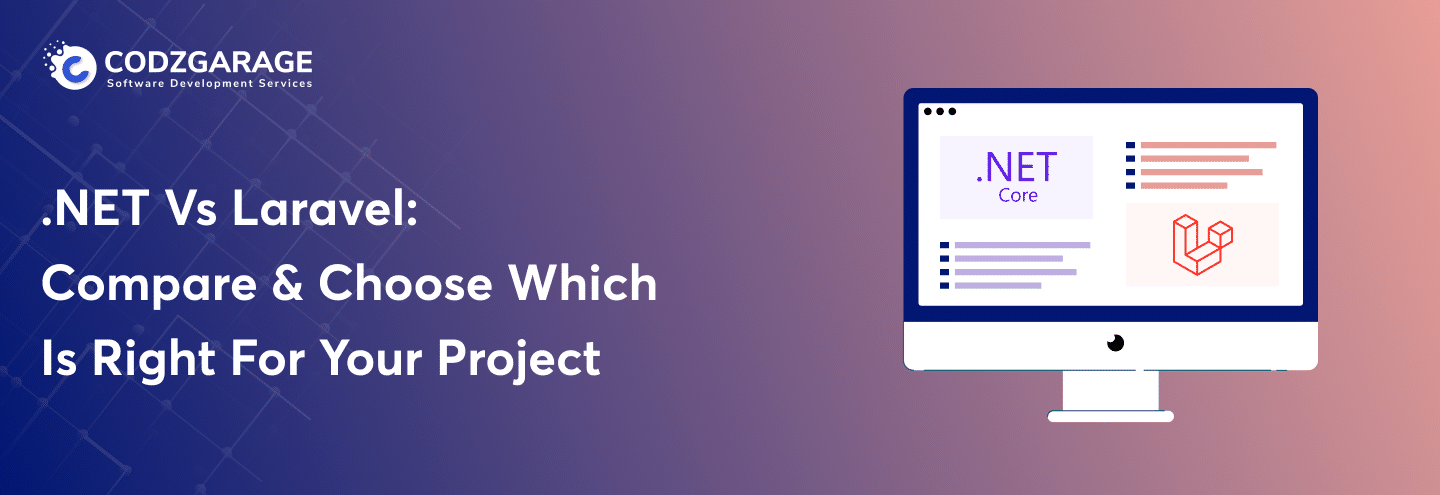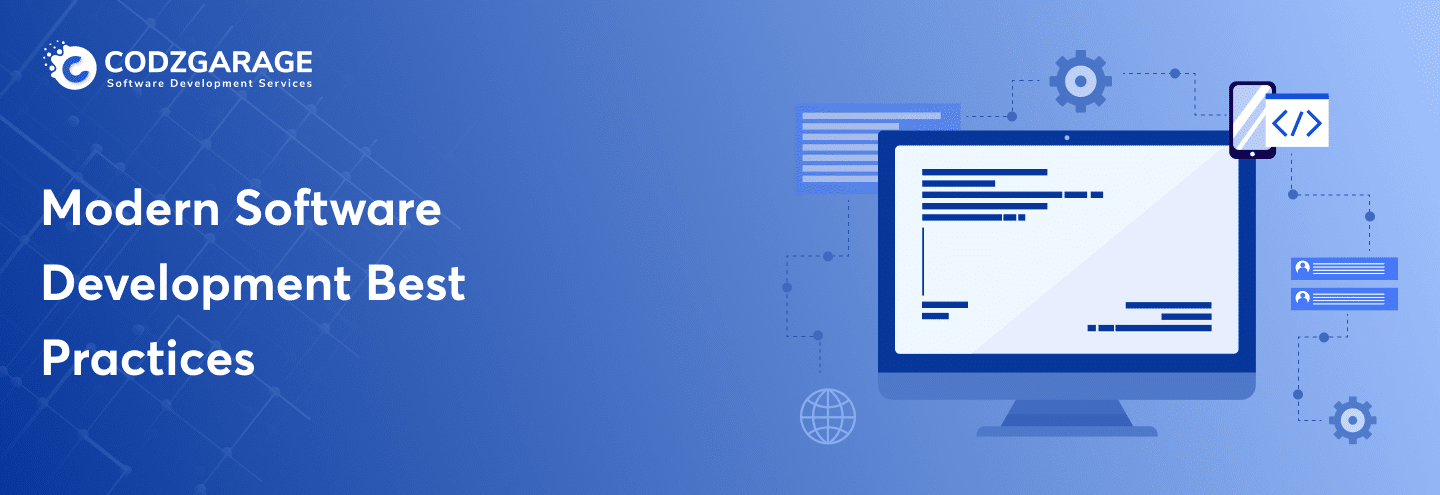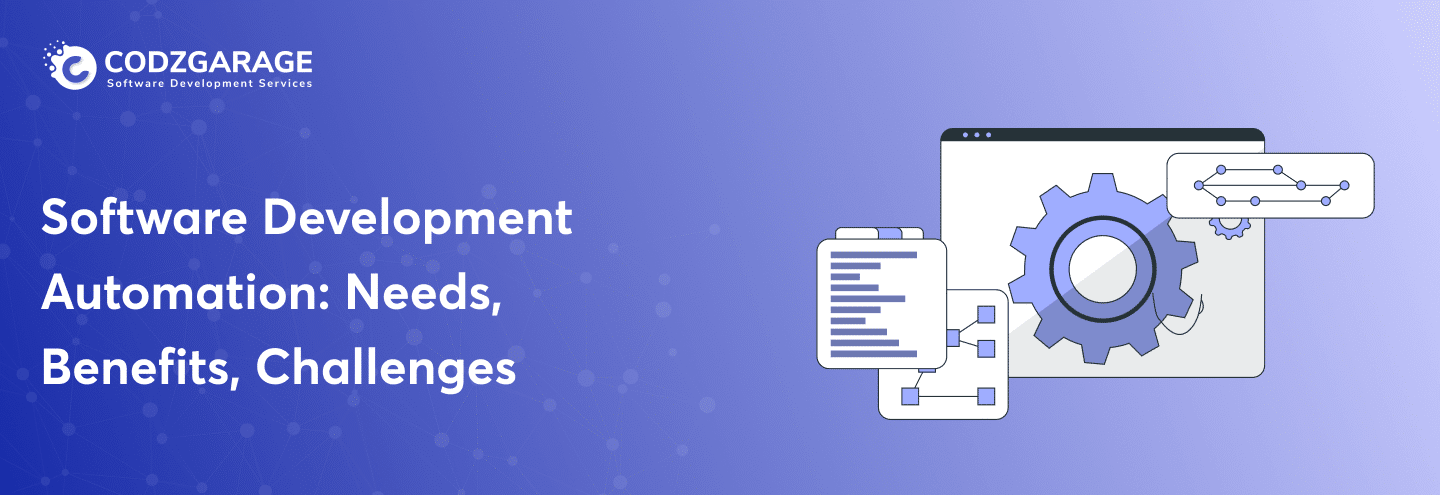Factors to Consider Before Re-architecting Your Legacy Software
A 360-degree approach to software re-architecting to assist you do away with the bottlenecks caused by your legacy system. Migrating legacy software needs some leg work and we have made some solid suggestions.
There’s nothing in the world that remains worthwhile all the while, and the software we make use of isn’t an exception. As time passes, everything becomes a cliche that no longer aligns with the current time’s needs. Then what? Do you need a new one? No, you’ve other alternatives as well —software migration and modernization.
When the software in your company outgrows your business needs, you need to upgrade it intending to keep it in line with those requirements. You can do it by software upgradation, software modernization, or software re-architecture and circumvent the need to build a new one.
Codzgarage is the top-rated software migration agency, helping business leaders convert their legacy desktop apps to web applications. Contact us today to learn more about our migration strategy.
In our previous blog, we suggested a strategy for application modernization; however, this article is all about software re-architecting. Here we’ll walk you through the top factors needed before you head up to legacy software re-architecting.
Let’s look up and down!
What’s Legacy Software Re-architecting?
Software re-architecting is a process that involves redesigning an existing software or application aimed at improving its functionality, performance, stability, and many other aspects as well.
The Process
The process to re-architect legacy software involves creating a new code, modifying an existing one, or, sometimes, an amalgamation of both, depending on the project requirements. It can be even upgrading your legacy system, using the new tech platforms. Legacy software upgrade is synonymously used with migration and modernization, albeit it’s quite different from software updates.
The Purpose
The purpose of re-architecting legacy software is to bring the obsolete system in alignment with the current requirements, streamlines operations, alleviate expense, and so on.
The Costs
The cost of re-architecting software mostly depends on the requirement, hence can vary depending on the variety of the project. The process may be tiresome, lengthy, and expensive, but if done correctly, it brings massive benefits to organizations.
What Benefits You Embrace by Software Re-architecting
- Enhances Scalability— Re-architecting legacy software leads to improving its scalability by separating it into multiple services. The conventional monolithic architecture, followed by a bundled approach, causes a lack of extensibility. When you want to make changes or add some features, the entire application gets affected. On the other hand, when you re-architect software into separate services, it becomes convenient to scale any service without disrupting the whole system.
- Alleviate Expense— As a business scales, the expense of owning legacy software goes higher and higher consistently. By decoupling the structure and cloud migration, legacy software re-architecting mitigates the overall expense of an existing system. For instance, the implementation of microservices architecture via a containerization approach leads to alleviating the cost.
- No Inconvenience Caused by The Failure of Monolithic Architecture— Most legacy applications are more likely to be monolithic software systems. They are built as a colossal system using a single code base. These applications are prone to fail and jeopardize the whole system even when there’s a miner issue. With decoupled services, the microservice approach is more fault tolerant. With microservice architecture, other services continue to function even when one service fails, keeping the system from a complete shutdown.
- Better Business Agility— Legacy software re-architecting assists businesses in creating the application’s new architecture and integrating additional features based on the needs. As a conventional monolithic architecture is coupled, adding features can influence the entire application. Re-architecting legacy software to microservices means integrating features into it with no disruption of operations.
- Improved Security Monitoring— Security is one of the key concerns for every business or organization, irrespective of its size and industry domain. Re-architecting your legacy software benefits you from a security point of view as well. Monitoring data at scale requires gargantuan efforts, specifically when you have a monolithic architecture. When you re-architect your system, it assists you in overcoming these issues by integrating cloud security monitoring tools, for instance, Amazon CloudWatch, Cloudflare WAF, Microsoft Azure Monitor, and so on.
Does Your Legacy Application Need to Get Re-architected or Migrated?
We can help you make a smooth migration without losing your existing data and process.
Let’s connectDoes Your Legacy Application Need to Get Re-architected or Migrated? We can help you make a smooth migration without losing your existing data and process.
Let’s connectRisks Involved in Legacy Software Re-architecting
Similar to any other thing, the software re-architecting has not only benefits but some of the risks involved in it. There are multiple risks, including application disruption, performance deterioration, reduced user experience, and so on. Do consider these risks when you go to re-architecting your legacy software.
Missing or Incomplete Documentation
When a company initiates re-architecting a legacy system that has been working for a long time (it may be 10-15 years), they are more likely to have missing detailed documentation. This may be because, such a long time ago, there were no practices and coding standards, resulting in undocumented and messy codes.
These types of codes are mostly hard to read, maintain, and streamline, resulting in complicating the re-architecting procedure. Except for it, you’ll need to find out engineers who know these codes and systems. In case there is a document, and essential parts are missing, the developers will be required to embark on the process from the beginning.
To circumvent this issue, organizing this chaos by initiating the process from documentation will come in handy.
Operational Disruption
When re-architecting existing software, there are more chances for disruption. This process can disrupt the operation and development lifecycle; for instance, re-architecting an old system that’s been around for 10-to-15 years needs to be documented intensively, involving almost all the processes. There may be a need to include some essential non-existent documentation, too.
Moreover, the engineers who worked on the monolithic software architecture may not be present for consultation, causing developers to invest more time in learning and understanding the legacy software. This will result in delayed release, and the operation may suffer downtime.
Performance Bottleneck
To re-architecture software alters and re-structures the entire application causing a significant influence on the business operation. When you have an eCommerce application with a monolithic architecture, the constantly increasing number of users and scaling make the monolithic approach a bottleneck.
A monolithic architecture is tightly coupled, and when you try to add additional features to it or scale the application, it’ll likely cause performance issues. It’s obvious because of being coupled with multiple software and applications.
Deterioration in User Experience
Another risk, or you can say that a negative aspect of re-architecting a legacy application, is the reduction in user experience. By utilizing an application for a long time, users get used to using every feature, and when there’s even a tiny mistake in the app’s UI, it may lead to infuriate the users causing them to learn again how to use the app. This can result in reduced user experience.
When Should You Consider Re-architect A Legacy Software
Now you might be thinking, when re-architecting becomes irrefutable, right? Let’s answer the question! Now, we’ll have an eagle eye on the circumstances when you need re-architecting your legacy software system.
When Your Business Outgrows Existing Application
When your existing software outgrows your business requirements, you should consider it as the right time for legacy software re-architecting. For example, when you have a client with a project requirement that outgrows your app’s capabilities, you should consider this as the right moment for the software re-architecting.
When You Have Cloud Compatibility Issues
Legacy software re-architecting becomes of utmost significance when you start encountering issues with cloud components. If you want to migrate to the could and find that the monolithic system isn’t capable of being migrated, you better consider software re-architecting.
The software re-architecting will enable you to separate the monolithic application into functional components, also called microservices, that’ll be compatible with the cloud environment.
When You’re Dependent on a Hardware, That’s Expensive to Maintain
A legacy application makes you dependent on immensely expensive hardware systems. These systems cause you to spend a small fortune on the maintenance of these hardware systems. Besides, these systems also increase vulnerabilities.
Furthermore, your legacy application won’t be in alignment with the new and trending technologies and innovations, leading to a proliferated expense on maintenance. The system also will cause of losing your competitive edge.
Significant Factors to Consider When Re-architecting Your Software
We performed a detailed exploration of software re-architecting, including what software re-architecting is and what are the benefits and losses of implementing it into your existing software system. Now is the time to come to our key discussion points and know the important factors to consider when re-architecting your legacy system.
Consider Proper documentation
When it comes to software re-architecture, proper documentation has a larger role to play. It’s one of the preliminary facets to consider for a successful result. In case you have inappropriate, partial, obsolete, and not structured documents, the first thing to consider is to initiate documentation. Embark upon writing app logic, business logic, current architecture, environment, planned upgrade actions, etc.
Find Efficient Developers
Application re-architecting isn’t a tiny task but involves the utilization of new and trending technologies, for instance, new programming languages, platforms, and frameworks. Don’t forget to ensure you have the right team of developers embedded with ample experience and expertise using new tools and technologies.
If you don’t have accurate developers, incorrect estimates and assumptions can be made, wasting time and budget.
Keep the data layer unturned as long as possible
Keeping the data layer untouched as long as possible can come in handy for a friendly result. The majority of projects have data stored on the backend that’s outdated that may require refactoring, too. You need to create new data models which can connect to the existing system’s database.
If you want to run new and old version side by side, you can create new data models which connect to existing entities in the database.
Consider Planning your Project Deliveries in Multiple Phases
It’s obvious that the re-architecting process occurs when the owner of the software needs changes or improvements in the existing system. As they are already suffering, consider not frustrating them more and plan to deliver the new version in multiple phases. Besides, you better adjust the product on the go as per the feedback from clients.
Replace Components That Are No Longer Necessary
Consider replacement of the old versions. Almost every legacy software has components that are obsolete at the current time. When re-architecting legacy software, you must perform a proper assessment of business goals, current functionality, and documentation and retire the component that is not necessary or capable of serving your purposes.
Employee New Functionalities
If you’re thinking about improving your product, software re-architecting is the way to go. The re-architecting process is the way if you’re someone thinking of implementing new features and functionality to your existing system. Consider performing intense research before thinking of adding new features so that you can make sure the features you’re going to add to your system will serve your purposes in the best way possible.
Wrapping Up!
No business can run flawlessly when being embedded with software that has got obsolete. Software that has outgrown your business needs can never cater to what you require; therefore, you need to make changes to it so that it can be aligned with the current needs.
Legacy software re-architecting assists businesses in making the very existing system work like a new one. When you re-architect your legacy system, you do every procedure required. The proceeding many processes, including retiring the old system ad adding new ones to make it like a new one.
We’ve suggested everything about a legacy system migration, including what’s software re-architecting, the process involved, and the significant facets to consider before conducting software re-architecting. We hope this article will help you the most if you need software re-architecting; get connected to us for high-end software development services.
Want to
Hire Software Migration ExpertHow We Help
- Migrate VB6 to .NET Core
- Convert VB.NET to .NET
- Desktop to Web Migration







 Kevin Bhut
Kevin Bhut 







